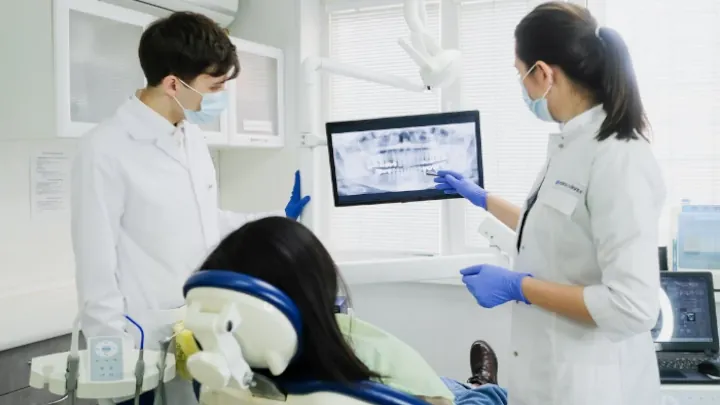10 Tips for Dentists to Improve Patient Treatment and Service

In the field of dentistry, providing exceptional patient care and treatment is paramount. With advancements in dental technology and an ever-increasing emphasis on patient satisfaction, dentists must constantly seek ways to enhance their practice.
Improving patient treatment not only involves the technical aspects of dental care but also includes the overall patient experience from the moment they step into the clinic.
This article explores ten critical tips for dentists aiming to elevate their patient care and treatment standards.
1. Stay Updated with the Latest Dental Practices
Dentistry is an ever-evolving field, with continuous advancements in techniques and treatments that aim to improve patient outcomes and comfort.
For dentists, staying updated with these developments is crucial. Engaging in continuous professional development through workshops, dental conferences, and online courses can equip practitioners with the latest knowledge and skills.
This commitment to learning not only enhances the quality of care provided but also instills greater confidence in patients, knowing that their dentist is abreast of the cutting-edge in dental care.
2. Ensure the Best Equipment and Timely Repairs
The quality and condition of dental equipment directly influence the effectiveness of treatments and the patient experience. Utilizing high-quality dental tools and ensuring they are in optimal working condition is paramount.
Regular maintenance checks and immediate repairs of any faulty equipment, such as dental chairs or x-ray machines, are essential.
Partnering with a professional dental equipment repair company can ensure that any issues are promptly and efficiently addressed, minimizing downtime and maintaining the continuity of care.
This approach not only guarantees the delivery of high-quality treatments but also underscores a dentist’s commitment to patient safety and comfort.
3. Prioritize Hygiene and Sterilization Protocols
Hygiene and sterilization in a dental practice are non-negotiable, given the potential risks of cross-contamination and infection.
Adhering to strict sterilization protocols for all dental instruments and maintaining a clean and hygienic environment are fundamental practices.
These measures protect both patients and dental staff and are essential for preventing the spread of infections. Effective sterilization techniques, such as autoclaving and the use of disposable instruments where appropriate, ensure that every patient receives care in the safest possible setting.
4. Adopt a Patient-Centered Approach
A patient-centered approach is essential for superior dental care. This philosophy emphasizes understanding and addressing the individual needs, concerns, and preferences of patients.
Effective communication is key, allowing dentists to explain treatment options clearly and to understand patients’ apprehensions and expectations.
Tailoring dental treatments to each patient’s specific needs not only enhances the effectiveness of the care but also improves patient satisfaction and trust in their dentist.
5. Implement Pain Management Techniques
Dental procedures can often be associated with anxiety and fear, primarily due to concerns about pain. Implementing modern pain management techniques is crucial to alleviate these fears and improve the patient experience.
Advances in anesthetics and sedation dentistry offer a range of options for minimizing discomfort during dental procedures.
Moreover, providing patients with advice on managing pain post-treatment can further enhance their overall experience and recovery process.
6. Foster a Welcoming Clinic Atmosphere
The ambiance of a dental clinic plays a significant role in patient comfort and perception. A welcoming, soothing environment can greatly alleviate the natural anxiety associated with dental visits.
Simple touches like a comfortable waiting area, soft background music, and a warm, friendly reception can make a substantial difference.
Additionally, ensuring that all staff members, from receptionists to dental assistants, are approachable and empathetic towards patients reinforces a positive clinic atmosphere. This approach not only makes the dental experience more pleasant but also fosters a sense of trust and safety among patients.
7. Utilize Digital Dentistry Advances
The adoption of digital dentistry technologies represents a leap forward in enhancing patient treatment and service.
Digital X-rays offer quicker and more precise diagnostics with significantly lower radiation exposure, while intraoral cameras provide detailed views of the mouth, facilitating patient understanding of their dental conditions and proposed treatments.
Moreover, CAD/CAM technology allows for the in-house creation of precise dental restorations, reducing wait times and improving treatment outcomes. By integrating these advanced technologies into their practice, dentists can offer more efficient, accurate, and engaging treatment experiences.
8. Offer Comprehensive Oral Health Education
An informed patient is an empowered patient. Dentists have a unique opportunity to educate their patients on the importance of oral health and its impact on overall well-being.

This education should include discussions on proper brushing and flossing techniques, the significance of regular dental check-ups, and the prevention of common dental issues.
Providing educational materials, such as brochures or instructional videos, can further reinforce these messages. By prioritizing patient education, dentists not only enhance their service but also contribute to the long-term oral health of their patients.
9. Encourage Regular Follow-Ups and Preventative Care
Preventative care is crucial for long-term dental health. Encouraging patients to adhere to regular check-ups and cleanings is essential for early detection and treatment of dental issues.
Implementing a system for scheduling follow-up appointments and sending reminders can significantly improve patient compliance with preventative care routines.
This proactive approach not only helps in maintaining the oral health of patients but also minimizes the need for more invasive treatments in the future, promoting a more preventive rather than reactive model of dental care.
10. Collect and Act on Patient Feedback
Continuous improvement is a hallmark of a thriving dental practice. Soliciting and acting upon patient feedback offers invaluable insights into areas of strength and opportunities for enhancement.
Whether through post-visit surveys, suggestion boxes, or direct conversations, gathering feedback demonstrates a commitment to listening and adapting to the needs and preferences of patients.
Addressing any concerns and making visible changes based on feedback can greatly enhance patient satisfaction and loyalty, positioning the practice as responsive and patient-focused.
Conclusion
The commitment to enhancing patient care and treatment in dentistry encompasses a comprehensive approach, from staying informed about the latest dental advancements to ensuring the highest standards of hygiene and patient comfort.
The practices highlighted above not only lead to better health outcomes but also build trust and satisfaction among patients, laying the foundation for a successful and fulfilling dental practice.





